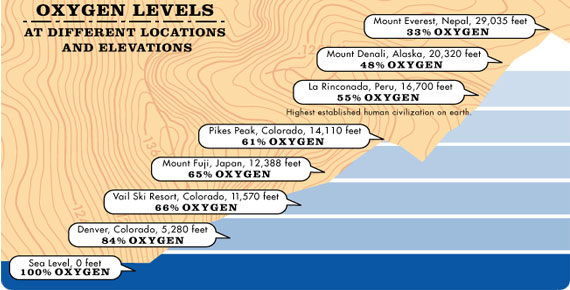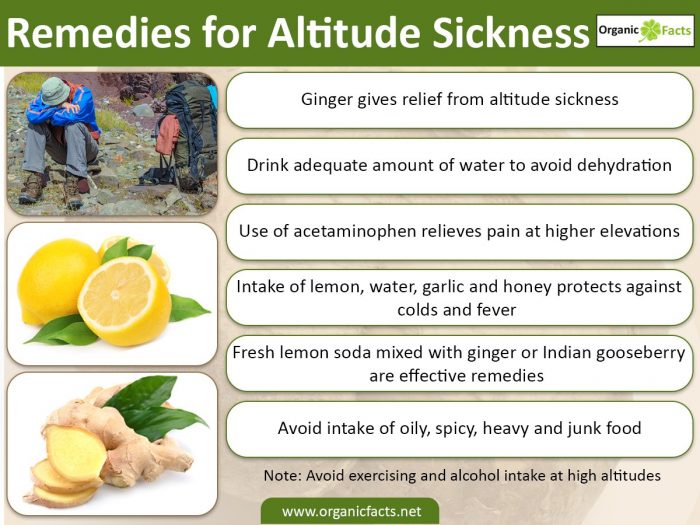 Altitude Sickness
Altitude SicknessThere is nothing to do with physical fitness, strength, and athletic for Altitude Sickness. Normally the sickness caused by high altitude is called altitude sickness. It is also called mountain sickness, is a group of general symptoms that are brought on by climbing or walking to a higher and higher altitude (elevation) too quickly. It is the response to the lack of Oxygen. It happens because the body doesn’t have enough time to adapt to the lower air pressure and lower oxygen level in the air at high altitudes. In general, trekkers going quickly to higher altitude are more likely to be affected. Two third of the trekkers going altitude of 4200m of above will feel some symptoms of Altitude Sickness. It is a totally preventable problem.

Symptoms
Mild Symptoms of Altitude Sickness
- · Nausea
- · loss of Appetite
- · Mils shortness of breath with exertion
- · Sleep disturbance
- · breathing irregularly, usually during sleep
- · Dizziness or light head aces
- . Slight swelling of hands and face.

Serious Symptoms of Altitude sickness
- · Shortness of breath and rapid breathing even after resting - 25 or more inhalations and exhalations per minute.
- · Sever coughing, coughing off pinkish
- · Coughing produce rust-coloured sputum
- · Rapid heart beat - 110 or more beats per minute.
- · Blueness of face and lips
- · Low urine output
- · Persistent vomiting
- · Sever headache
- · Fatigue/tiredness
- · Delirium, confusion and coma
- · loss of coordination.
Who Gets It?
Anyone can develop altitude sickness, no matter how fit, young, or healthy they are -- even Olympic athletes can get it. In fact, being physically active at a high elevation makes you more likely to get it. Your chance of getting altitude sickness depends on a few other things: how quickly you move to a higher elevation, how high you go up, the altitude where you sleep, and other factors.
Your risk also depends on where you live and the altitude there, your age (young people are more likely to get it), and whether you’ve had altitude sickness before. Having certain illnesses like diabetes or lung disease doesn’t automatically make you more likely to develop altitude sickness. But your genes could play a role in your body’s ability to handle higher elevations.

Preventions
The best way you can lower your chance of getting altitude sickness is through acclimatization. That means you let your body slowly get used to the changes in air pressure as you travel to higher elevations.
You’ll want to climb to higher altitudes gradually. Going slowly helps your lungs get more air through deeper breaths and allows more of your red blood cells to carry oxygen to different parts of your body.
Some of the basic guidelines for acclimatization are:
- Don’t use tobacco, alcohol, or other medications, such as sleeping pills.
- Start your journey below 10,000 feet. If you have to fly or drive somewhere that’s higher up, stop at one destination that’s lower for at least a full day before going any higher.
- If you walk, hike, or climb over 10,000 feet, only go up an additional 1,000 feet per day. For every 3,000 feet you climb, rest at least a day at that height.
- “Climb high and sleep low”: If you have to climb over 1,000 feet in a day, make sure you come back down to a lower altitude to sleep.
- Drink 3-4 quarts of water every day and make sure about 70% of your calories are coming from carbs.
- Know how to identify the first signs of altitude sickness. Immediately move to a lower elevation if you start to develop these symptoms.
Treatments
If you get a headache and at least one other symptom associated with altitude sickness within a day or two of changing your elevation, you might have altitude sickness. If your symptoms are more severe, you’ll need medical attention.
- Knowing the symptoms of altitude sickness will help you seek treatment early, while the condition is still mild. The most important treatment for any level of altitude sickness is to go down to a lower elevation as soon as possible while remaining safe.
- If you have severe altitude sickness, you’ll need to be taken down to a lower elevation right away -- and it must be lower than 4,000 feet. You’ll have to see a doctor as soon as possible and you may need to go to the hospital.
- Stop and rest where you are.
- don't go any higher for at least 24-48 hours.
- If you have a headache, take ibuprofen or paracetamol.
- If you feel sick, take an anti-sickness medication, like promethazine.
- Make sure you're drinking enough water.
- Avoid alcohol.
- Don't smoke.
- Avoid exercise.

There are three rules for the treatment of altitude sickness- DESCENT, DESCENT, DESCENT.


References:
clevelandclinic.orgwebmd.com





No comments:
Post a Comment